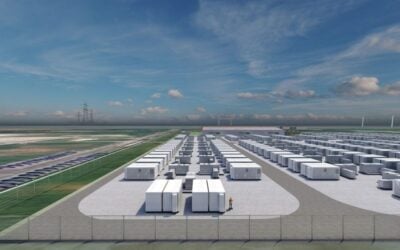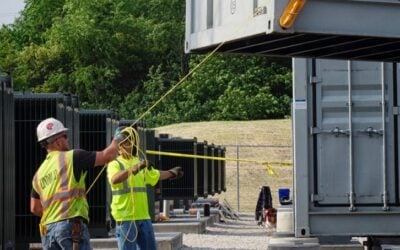
The Ohio Power Siting Board has given approval to a large-scale standalone battery energy storage system (BESS) project for the first time in its history.
OPSB issued its certificate of environmental compatibility and public need on 20 October, for Flint Grid BESS, under development by Eolian. Without that certificate, energy projects in Ohio can’t proceed to the next steps.
The developer is planning it as a 200MW/800MWh system near New Albany, Ohio. It is crucially also near to a large and growing number of data centres and will share a grid interconnection point with those, while Intel is building its US semiconductor factory in the vicinity as well.
The BESS will charge with energy from the grid during off-times or periods of high renewable energy generation, and then output during peaks, reducing strain on the grid and the need for balancing energy from fossil fuel plants.
Try Premium for just $1
- Full premium access for the first month at only $1
- Converts to an annual rate after 30 days unless cancelled
- Cancel anytime during the trial period
Premium Benefits
- Expert industry analysis and interviews
- Digital access to PV Tech Power journal
- Exclusive event discounts
Or get the full Premium subscription right away
Or continue reading this article for free
On the same day it approved Flint Grid, the OPSB also gave approval to Harvey Solar Project, a proposed 350MW solar PV plant from developer Open Road Renewables.
According to documents filed with the Ohio Power Siting Board (OPSB) in proceedings which began in October 2021, the developer’s Flint Grid, LLC, subsidiary, expected to begin construction from around the third quarter of 2023, for commercial operations to begin by Q2 2024.
Flint Grid has secured land for the project and will build a substation to deliver power to the existing 138kV substation at Jug Street, where the data centres are also connected to the grid, and also provide necessary upgrades to the Jug Street station.
“The general purpose of the Facility is to strengthen grid reliability and speed, and to deliver clean electricity to the Ohio bulk power transmission system to serve the needs of electric utilities and their customers,” the application to OPSB read.
“The electricity stored by the Facility will be transferred to the transmission grid operated by PJM Interconnection, for sale at wholesale or under a power purchase agreement.”
Eolian acquired the project along with the rest of the development assets of another developer, Able Grid. The pair had worked together in a joint venture (JV) since 2017, amassing a 10GW development portfolio of large-scale storage around the US. Eolian bought out the JV in 2021, a little while after a 200MW BESS contract was awarded by the pair to system integrator Wartsila for two projects in Texas’ ERCOT market.
Market research from Mercom Group recently highlighted that US$925 million of investment raised by Eolian was the biggest corporate funding transaction for an energy storage company this year so far.





